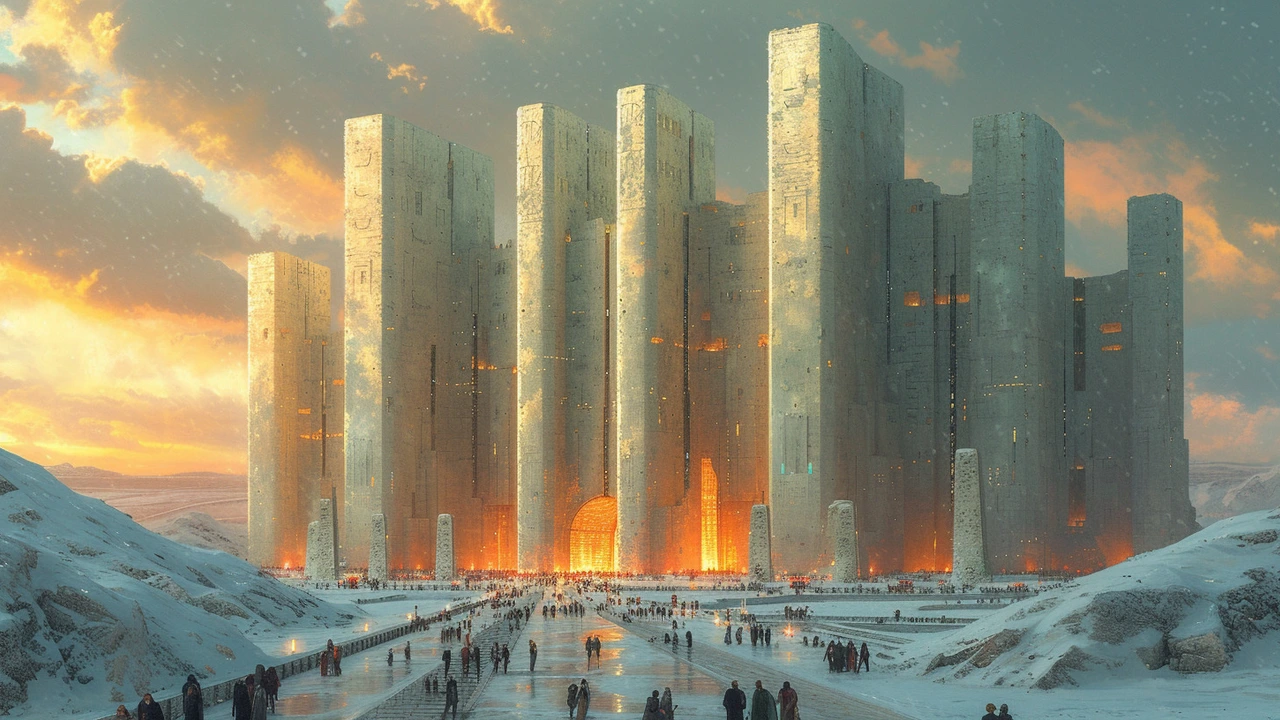Constructivist Architecture: Transforming the Way We Build
 Oct, 14 2023
Oct, 14 2023
Understanding the Essence of Constructivist Architecture
It's simply impossible for me to pass by an incredibly unique and sharply angular building without stopping in wonder – this is the effect of the constructivist architecture on me. And believe me, it’s not my inherent inclination towards eccentricity that draws my fascination. Just like when I observe my Maine coon cat Misty perched on a shelf that would buckle under the weight of my golden retriever Sammy, constructivist architecture tickles a fascination with the unusual. Constructivist architecture is essentially a form of design that embodies the unexpected, challenges presumed norms, and disrupts the traditional understanding of spatial organization.
Stemming originally from Russia in the early 20th century, constructivist architecture was an attempt by the Soviets to break free from classic ornamental extravagance and embrace the future with radical geometric designs. The predominant use of simple materials such as glass, steel, and concrete contributed to its distinct structural form, influenced by the principles of factual construction. This introduction may seem a bit pedagogical, but getting lost in the words of a style so transformative is akin to losing oneself in the depth of the Mariana Trench – deep and mesmerizing!
How Constructivism Transformed the Architectural Landscape
The Constructivist movement brought a paradigm shift in the architectural landscape. The buildings, which emerged as a result, were more than just shell structures. Just like my beloved Misty who confidently saunters around, flaunting her fluffy tail and her glorious mane, constructivist buildings stood tall with a daring industrial character. But what’s even more fascinating, as every constructivist-era building displays, is how its architectural integrity synergizes with its purpose. This means that the form and intrinsic aesthetics of a building coalesce seamlessly with its intended use.
Quite an innovative perspective for the architectural horizons in the early 20th century, right? And here’s a fun fact, Leonidov’s Narkomtiazhprom project, though never actually built, was said to be structured as such that it was supposed to move with the sun. It’s like playing a perpetual game of hide and seek with the sun, always pivoting to where it hides, always embracing its light!
Understanding the Principles of Constructivist Architecture
Moving away from the common perception that portrays constructivism as a colossal machine of steel and glass, untouched by human sensibility or organicism, let’s delve deeper into the crux of this architectural philosophy. The defining principles of constructivist architecture, such as volume over mass, transparency, and the dominance of spatial construction over plane-like walls, revolve around a central fact - Constructivism is a conversation between the architect and the potential dwellers or users, a dialogue about space and its possibilities.
Now imagine you and Sammy in the park. You would throw a Frisbee, and he would run enthusiastically to collect it. This is the interactive essence of constructivism, where the architect throws an idea, a concept, and the building users determine its resonating impact.
The Intricacies of Constructivist Aesthetics
At first glance, the aesthetics of constructivist architecture might seem as perplexing as trying to understand the complicated steps of a Bachata dance routine, but once untangled, it’s a harmonious blend of simplicity and expressiveness, a concoction of bold forms and subtle undertones. The heavy reliance on geometric forms creates an audacious visual appeal that can be both captivating and intimidating. Yes, just like Misty, when she gives you “the look” under the dull yellow light, from atop her lofted kingdom of a cat-tree.
The magic of constructivist aesthetics lies in this abstract plane where harmony and equilibrium coexist in disarrayed structures. This dimensional play within the buildings stimulates both interaction and exploration, ushering in moments of discovery and awe.
Title: Constructivist Architecture and the Role of Materials
A picture is incomplete without its brushstrokes, and an idea without a medium. Similarly, constructivist architecture is highly reliant on the materials used for its realisation. The minimal and functional dominance of steel, glass, and transparent materials grant these buildings their distinct flavour. Constructivist buildings often give off an air of 'honest expression,' where the construction doesn’t hide behind false pretenses of plaster and paint but displays its rawness and boldness for all to see.
This transparency, both literal and metaphoric, promoted an open communication between the insides and outside of these structures. Simple and straightforward materials shaping complex yet coherent structures is surely an intriguing paradox, right?
The Global Impact of Constructivist Architecture
Constructivist architecture has had a global extension, with its ideologies influencing designers all over the world. Think of Zaha Hadid’s MAXXI Museum in Rome or the polyhedral brilliance of the Beijing National Stadium – they all drink from the same fountain of inspiration, impregnated with constructivism!
Much like Sammy’s infectious energy that makes me join him in his crazy antics, constructivist architecture has pervaded the architectural sector with its robust aesthetics and philosophical depth. It evolves with time and is far from being a stagnant historical relic. It challenges the status quo and never shies away from experimentation – a trait that keeps constructivism alive and thriving.
Conclusion: Embracing the Unconventional through Constructivism
And here we are, at the end of this thrilling expedition into the depths of constructivist architecture. As we bid our adieus, remember, constructivism is not just a style, it’s an ideology that goes beyond the boundaries of normativity. By introducing us to the avant-garde and opening our senses to perceive unconventional spaces, constructivist architecture hasn't just transformed buildings, but the way we perceive the world around us.
So, the next time you happen to cross paths with a distinctive, abstract structural marvel, don’t just rush by. Whether you love it or hate it, take a moment to let the architecture wash over you. Feel its rhythm, its pulse, much like you’d feel the purring of my sweet Misty as she curls up beside you or Sammy’s ecstatic wagging tail every time he spots his favourite toy!